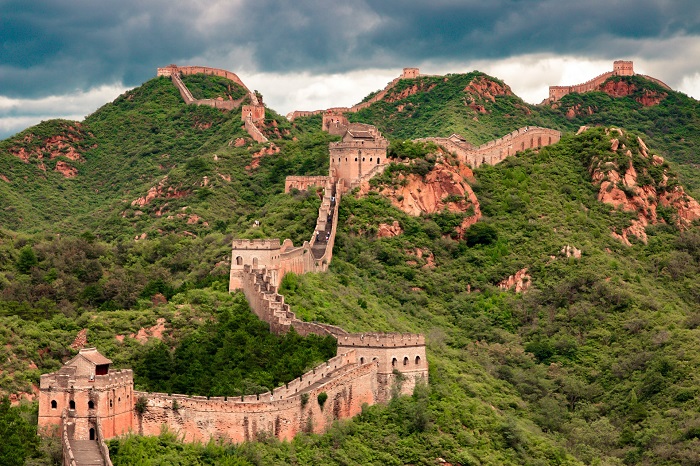ISABEL RUBIO ARROYO | Tungsteno
More than seven dynasties and 2,000 years. That's how long it took to construct the Great Wall of China, a colossal fortification that was built in several phases. There are other constructions around the world that also took centuries to complete, from the prehistoric monument Stonehenge (England) to the iconic temple of Kukulcan in Chichen Itza (Mexico) and the emblematic Alhambra (Spain).
The Great Wall of China (2,000 years)
The Great Wall of China is undoubtedly one of the greatest engineering works on the planet. If there is one thing that makes this fortification stand out, it is its stratospheric dimensions. It has thousands of watchtowers and measures more than 21,000 kilometres long, which is almost twice the diameter of the Earth and half its circumference. Its construction, which was the work of several dynasties, began around 200 BC. It is believed that the first emperor of a unified China, Qin Shi Huangdi, ordered the construction of a huge defensive line against the nomads of the northern steppes. Construction was abandoned and resumed over 2,000 years, until 1644, and under the rule of seven dynasties.
Although there are no official figures, some historians estimate that more than a million people helped to build the wall during this period, from labourers and soldiers to peasants and prisoners. It is estimated that as many as 400,000 people died during construction of the wall. In fact, the Great Wall of China has sometimes been called "the longest graveyard in the world". Although some people were buried in the vicinity of the fortification, there is no evidence that their bones were used to build the wall itself. It is also a myth that this fortification can be seen from space, according to NASA.
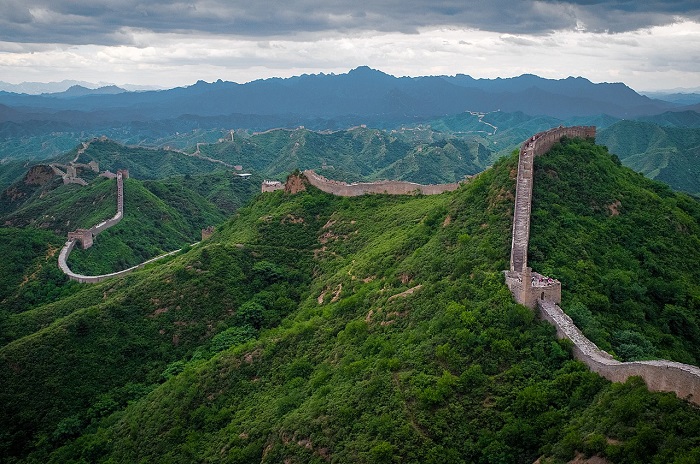
The Great Wall of China has thousands of watchtowers and measures more than 21,000 kilometres. Credit: Severin.stalder.
Stonehenge, England (1,500 years)
About 5,000 years ago, hundreds of people transported some 80 stones weighing up to two tonnes each to the south of England. They were used to build Stonehenge, one of the most famous prehistoric monuments in the world. Why this iconic megalithic structure was erected is still a mystery. Apart from a burial site, the main hypotheses speculate that it may have been an astronomical observatory, a monument to seal the peace between local peoples, a religious temple or a meeting place for druids.
But Stonehenge was not built all at once, over a specific period of time, but was erected in phases over a period of about 1,500 years. The structure that stands today consists of an inner circle of six large stone blocks topped by three colossal lintels, and an outer circle of seventeen monoliths with lintels. This is all that remains of a monument that once included more than 160 stone blocks. It is now considered by the United Nations Educational, Scientific and Cultural Organisation (UNESCO) to be the “most architecturally sophisticated prehistoric stone circle in the world.” The organisation highlights the large size of the megaliths, the shape of the stones, their concentric design and the precision with which they were built.
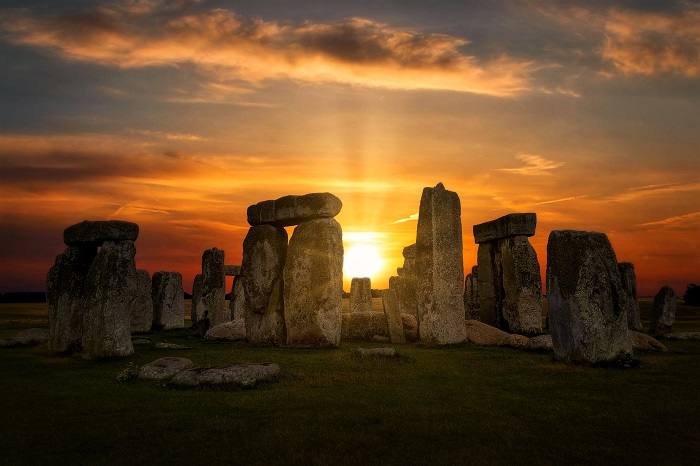
Stonehenge, one of the world's most famous prehistoric monuments, once consisted of more than 160 stone blocks. Credit: Max Pixel.
The Temple of Kukulcan, Mexico (700 years)
Chichen Itza, one of the main archaeological sites of the Yucatan Peninsula (Mexico), is one of the seven new wonders of the modern world—chosen by more than 90 million people in an international competition in 2007. The main structure of this iconic Mayan city is the Temple of Kukulkan, also known as El Castillo or “The Castle”. This pyramid, which normally receives more than 2.5 million visitors a year, was erected in several stages of construction, ranging from the 6th to the 14th century. Its present appearance corresponds to the last phase, dated between AD 1000 and 1300.
The temple stands on a large esplanade that was the religious, cultural and political centre of the Mayan empire. It has nine levels, four facades—each with a central staircase—and a small temple at the top. It is thought that this pyramid is the representation of the Mayan calendar. Each of its 364 steps represents one day of the year. Added to the upper platform of the temple, they would give the 365 days of the solar year.
For its construction, the Mayans observed in detail the behaviour of the seasons and the trajectory of the Sun. In fact, twice a year an astronomical phenomenon known as the "light and shadow" equinox takes place. During certain hours, the effect of sunlight and shadow on the temple steps produce the undulating shape of a serpent's body, which appears to descend from the summit of the pyramid.
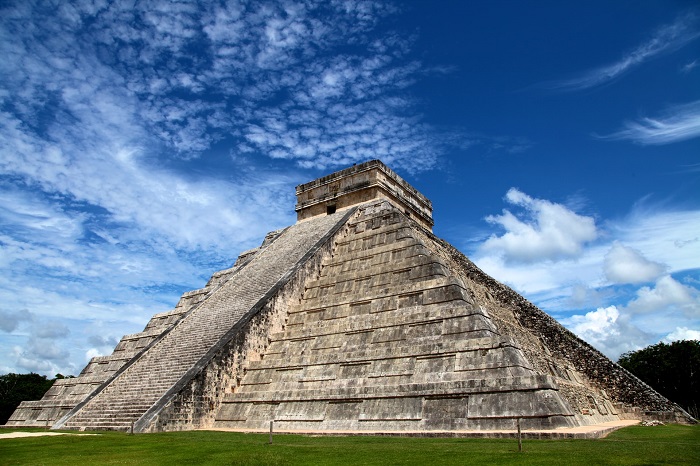
The temple of Kukulkan stands on a large esplanade that was the religious, cultural and political centre of the Mayan empire. Credit: Unsplash.
The Alhambra, Spain (600 years)
When the Alhambra was erected much of the work was done at night, and because of the fires and torches lit by the workmen, when viewed from afar it appeared reddish. This is supposedly the origin of its name, which in Arabic means "red castle", according to one of the main hypotheses. The complex took some 600 years to build. Situated in a strategic position on Sabika Hill in Granada, this palatine city is one of the most representative examples of Nasrid and Hispano-Arabic architecture. It consists of a complex of palaces, gardens and defensive fortresses, including the Nasrid Palaces, the gardens of the Generalife and the Alcazaba (military zone).
Although many historians suggest that buildings probably existed on the hill before the arrival of the Muslims, the Alhambra is first recorded in the 9th century. The main improvements were made under the Nasrid dynasty in Granada under monarchs such as Muhammad ben Al-Hamar (Muhammad I). The constructions, made of materials such as ceramic, marble and plaster, are characterised by their lightness. But if there is one thing that makes these structures stand out, it is the innumerable details that adorn them. The engravings mainly deal with plant motifs or Mocárabe decoration (honeycomb vaulting). They also include texts and poems written in classical cursive and Kufic calligraphy.
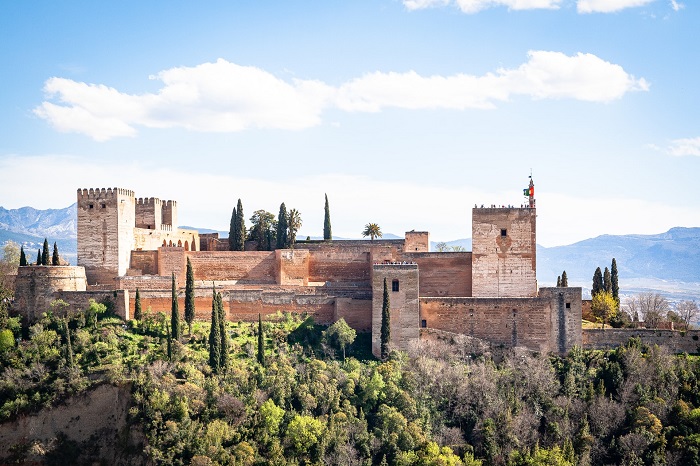
The Alhambra is made up of a complex of palaces, gardens and defensive fortresses. Credit: Unsplash.
· — —
Tungsteno is a journalism laboratory to scan the essence of innovation. Devised by Materia Publicaciones Científicas for Sacyr’s blog.
